A lifted suspension, 8.3 inches of ground clearance, and 277 turbocharged horses make the XRT surprisingly capable.
Hyundai has experienced quite the status shift since it arrived in the US nearly 40 years ago. Once a brand you’d only suggest to your worst enemies, its cars have achieved a blend of affordability, competence, practicality, and even high-performance desirability.
Even so, most Hyundais remain the sort of thing you’d recommend for a long commute or a curvy road, not a campsite at the end of a fire trail.
That’s about to change with the arrival of the 2024 Santa Fe. Now in its fifth generation, the Santa Fe sports a stiffer chassis, far more spacious interior, impressive turbocharged power, and most importantly, a toughened-up XRT trim level.
Those letters aren’t new to Hyundai, as the Palisade SUV, Santa Cruz pickup, and outgoing Santa Fe offer such a trim level. But on those vehicles, XRT means gloss black wheels, faux skid plates, roof racks, and not much else.
On the new Santa Fe, XRT brings a lifted and retuned suspension, 8.3 inches of ground clearance, all-terrain tires, and more off-roadable stability control programming. Boxy styling aside, the XRT isn’t a replacement for your long-travel, low-range XJ Cherokee, but it might give Subaru Wilderness and Bronco Sport shoppers a second thought.
On The Mean Streets
Our first stint behind the wheel of the Santa Fe was on pavement, which the crossover happily ate up. The turbocharged 2.5-liter under the flat, chiseled hood puts out 277 horsepower and 311 pound-feet of torque, far more than you’d find in the similarly priced Subaru Outback Wilderness.
The XRT also gets a wet dual-clutch transmission that bathes the clutch packs in oil for smoother low-speed behavior and better performance when pushing hard or towing heavy. Speaking of, while other Santa Fes make do with a 3,500-pound trailer cap, the XRT can tug 4,500 thanks to added engine and transmission oil cooling.
The 4,486-pound Santa Fe has no trouble getting up to freeway speed or executing a quick two-lane pass thanks to that responsive transmission and an engine that makes peak torque between about 2,000 and 4,000 rpm.
On-road composure is excellent, with reasonable body control and a stable, smooth ride over even pock-marked pavement. The quiet cabin gives up little tire or wind noise, despite newly boxy proportions that could have made echo chamber at speed.
Speaking of, the Santa Fe is 2.0 inches longer and rides on a 1.8-inch-longer wheelbase, but its width is identical to the 2023 model. Yet the cargo opening is a massive 5.7 inches wider and 3.0 inches taller, making loading awkward-shaped stuff much easier.
The luggage area is larger as well—40.5 cubic feet behind the second row, compared to 36.3 on the old Santa Fe or 32.6 on the Outback Wilderness. When the smallish third row is deployed, there’s still a decent-for-the-class 14.3 cubes of cargo room available.
Forest Ranger
Once away from the crowds, we found ourselves on a remote Tennessee ranch, where Hyundai had set up two different off-road courses on which to sample the Santa Fe XRT. While it lacks a low-range transfer case, the XRT (like other all-wheel-drive Hyundai crossovers) has a locking center differential, which routes equal power to the front and rear axles even if one or two wheels begin to lose grip.
The rugged trim’s stability controls are uniquely tuned to step in if slippage gets intense, selectively braking spinning wheels to route power to those with grip rather than just cutting throttle entirely.
But while talk is cheap, the Santa Fe XRT has the grip and muscle to back up its boasting. The first off-road loop’s narrow trails made it easy to appreciate the Hyundai crossover’s flat hood, low beltline, and door-mounted sideview mirrors, and the good visibility and narrow body width helped avoid any mountain pinstriping.
We came to a dead stop on a rocky 25-percent grade, engaged the center locker, and eased onto the throttle with no drama. The Santa Fe huffed through a little turbo lag, but once the engine was boiling, it had no trouble getting us up to the top of the hill with surefire security.
The second loop promised a bit more excitement, as it descended into the forest floor to have us traverse several muddy rivulets and wet, grassy bogs. Those crossings betrayed the Santa Fe’s overall lack of suspension travel—nothing out of the ordinary for a crossover—but the stability controls did their work here just fine. Keep your foot in the throttle when you notice a lifted tire and the software will shuffle power away from the sky and back toward the ground, getting you moving once again.
The XRT features Hyundai Motor America’s first-ever application of off-road tires, and the Continental TerrainContact A/T rubber coaxed the Santa Fe through the sticky mud and wet grass with only a little hesitation.
A more aggressive set of all-terrains would surely improve matters further if hard-core adventuring is the goal; more linear throttle response, a bit of extra wheel travel, and a front-facing camera would also be nice. But even factory-fresh, the Santa Fe XRT made a surprisingly intense trail very enjoyable.
Campground Equipment
Once we got done appreciating the impressive running gear, we got a bit more intel on some of the XRT’s adventure-ready features. One of the most surprising bits is the flush, rectangular door on the C-pillar, which pushes in to reveal a clean and dry handhold for climbing up to the roof rack.
Those rails also stand tall and proud, with a dynamic load limit of 220 pounds that matches that of the Outback Wilderness. Hyundai doesn’t publish a static limit, but the Outback can do 700 stationary pounds, so we assume the Santa Fe could accommodate a sleeping platform, two adults, and the family hound without much trouble.
If sleeping inside is more appealing, both the second- and third-row seats fold completely flat and butt up against each other, creating ample space for a full-size air mattress.
Better still, there are a pair of USB-C ports on the front seatbacks and a sliding drawer on the center console facing the rear to keep stuff charged and organized. The rear doors and cargo area side panels also offer a total of 16 cupholders, and the third row’s 120-volt outlet and dedicated ventilation controls add a measure of comfort and convenience when camping.
An Ideal Weekender?
The 2024 Hyundai Santa Fe XRT is the latest attempt to bring a sense of ruggedness and adventure into the crossover space, moving in on turf that Subaru has occupied since 1996. But where the South Korean SUV excels is in blending a host of attributes into one vehicle.
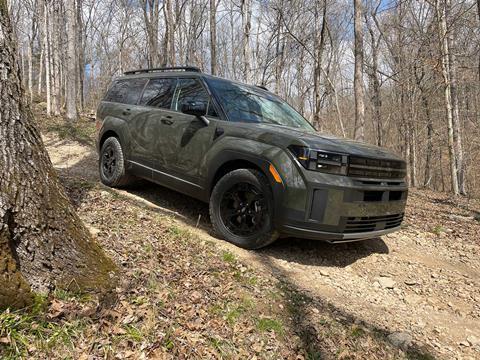
It packs more cargo and interior room onto a smaller footprint than either the Subaru Outback Wilderness or Honda Pilot Trailsport, and its more powerful engine doesn’t come at the expense of fuel economy, rated at 19 miles per gallon city, 26 highway, and 22 combined. And it can even tow a pair of Jet-Skis, a pop-up travel trailer, or a utility bed if need be.
A spacious and comfortable interior, impressive tech suite, and bold eight-bit styling are nothing new for the Hyundai brand. Nor is affordable pricing, which for the Santa Fe lineup starts at $34,800 and rises to $41,995 for the XRT—right between the $41,305 Outback Wilderness and $45,895 Passport Trailsport.
What is new to the Santa Fe (and to Hyundai as a whole) is the level of versatility that the XRT offers. Seating for seven, flexible interior storage, some genuinely surprising rough-road capability, and a torquey turbo motor are tailor-made to make the Santa Fe XRT a winner among weekend warriors.
| 2024 Hyundai Santa Fe XRT | |
|---|---|
|
Base Price |
$40,600 + $1,395 D+H ($41,995 total) |
|
Engine/Trans |
Turbocharged 2.5-Liter Inline-Four/Eight-Speed Dual-Clutch Automatic |
|
Horsepower/Torque (lb-ft) |
277/311 |
|
Fuel Economy |
19 city/26 highway/22 combined |
|
Wheelbase (in.) |
110.8 |
|
Tire Size |
245/60R18 |
|
Approach/Breakover/Departure Angles (degrees) |
19.3/19.1/21.8 |
|
Ground Clearance (in.) |
8.3 |
|
Cargo Area (cu.in.) |
14.6/40.5/79.6 |
|
Curb Weight (lbs.) |
4,486 |
|
Payload (lbs.) |
1,191 |
|
Towing (lbs.) |
4,500 |
Access More Great Stories!
For more informative articles like this, consider subscribing to OVR Magazine in print or digital versions here. You can also find the print edition of OVR at your local newsstand by using our Magazine Finder.



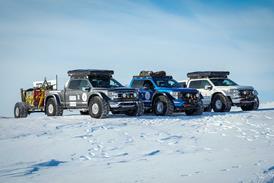
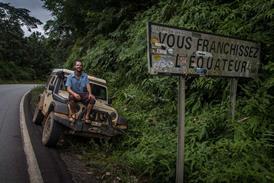
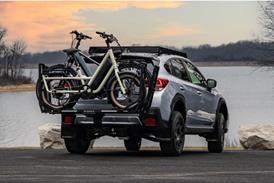

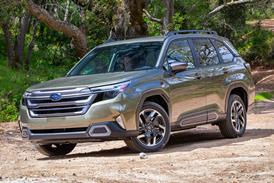


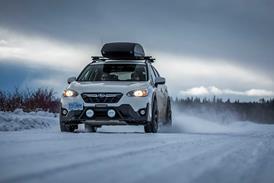
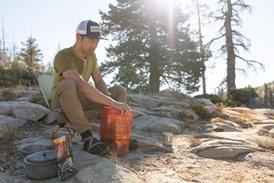
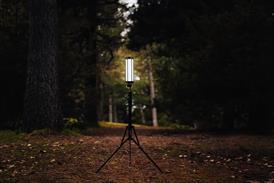
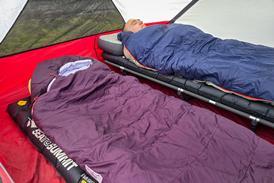

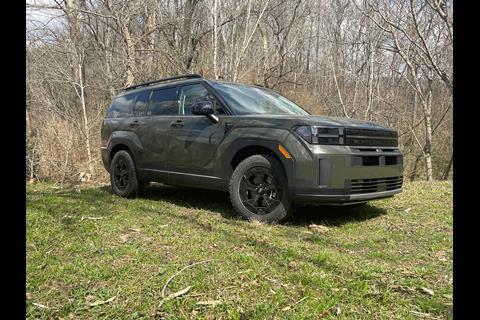
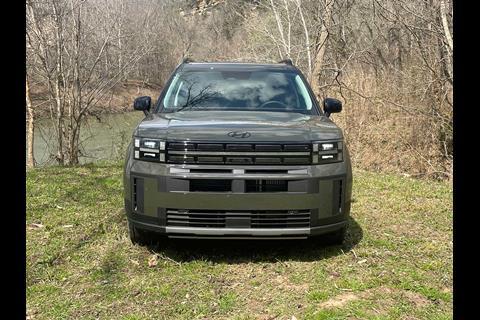
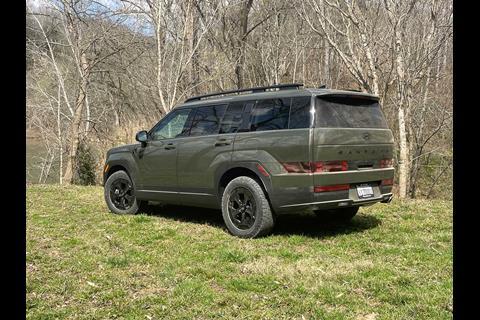
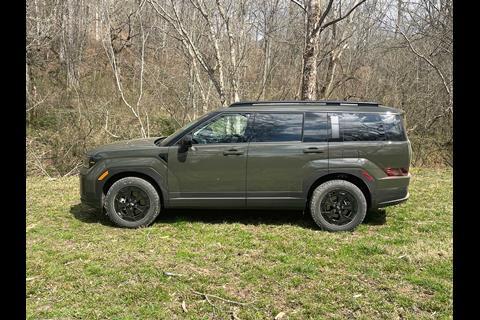
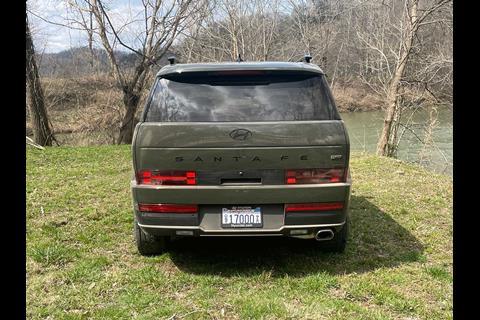
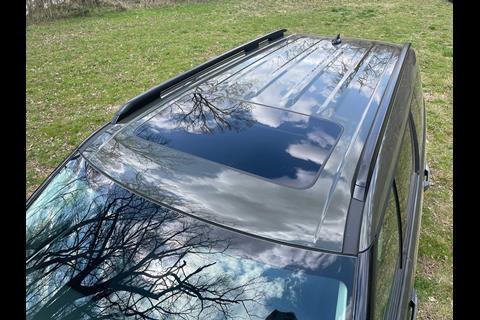
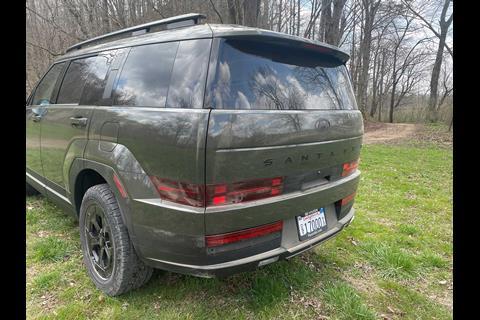

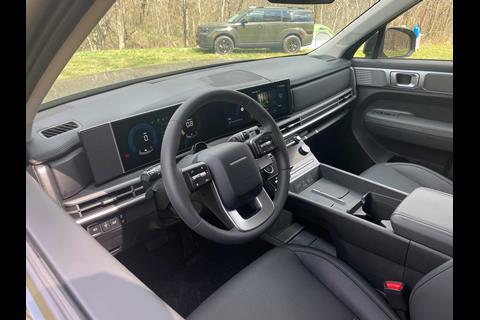

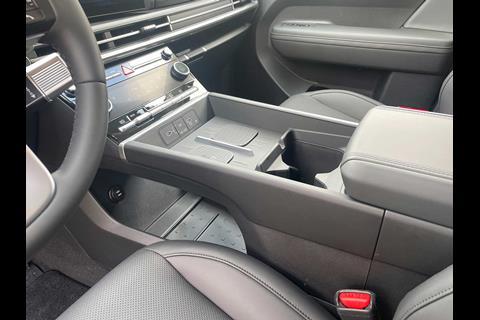
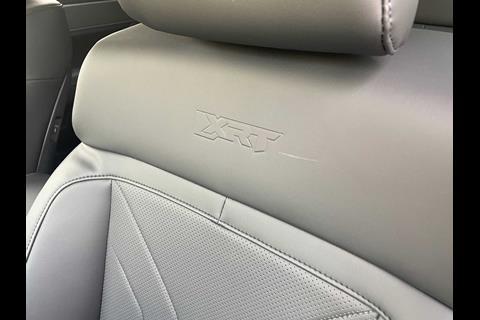

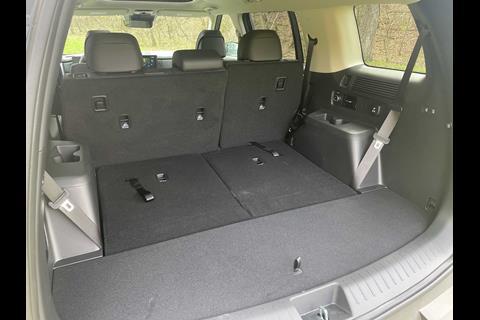
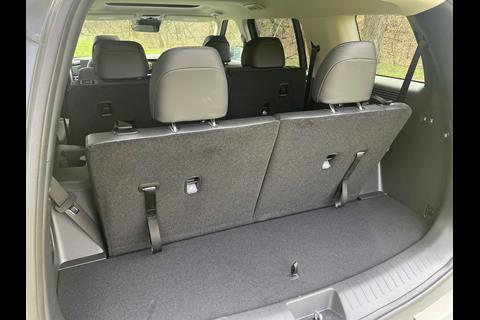
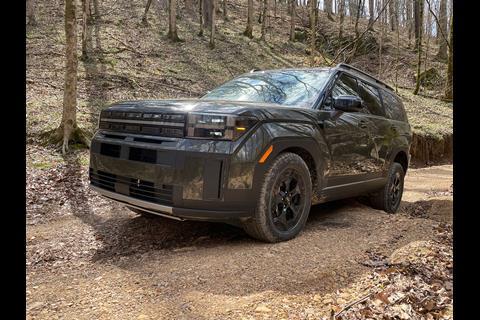

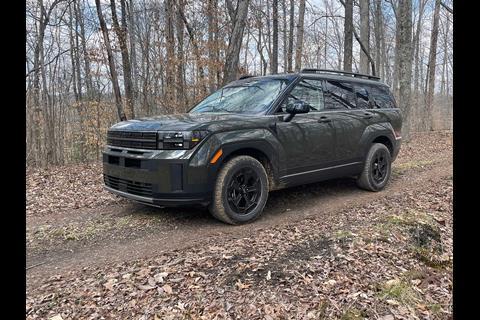
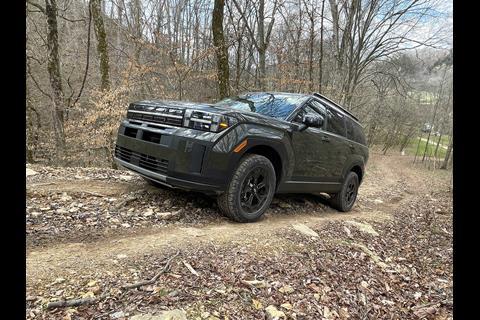
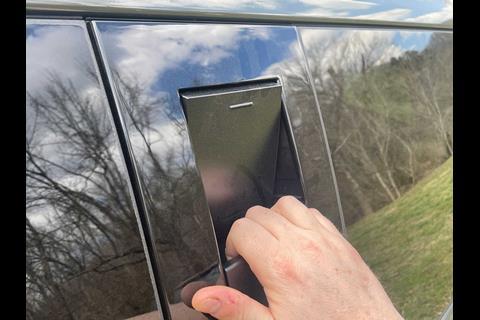
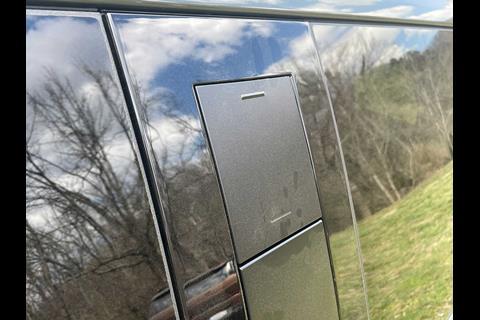
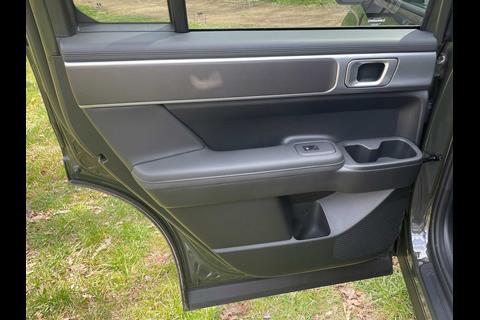
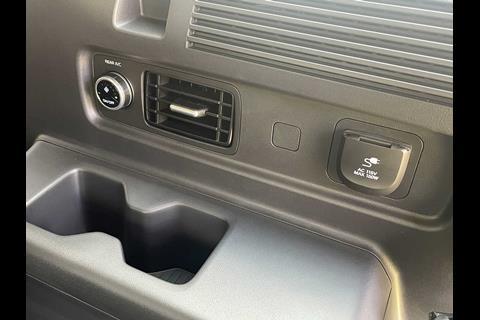
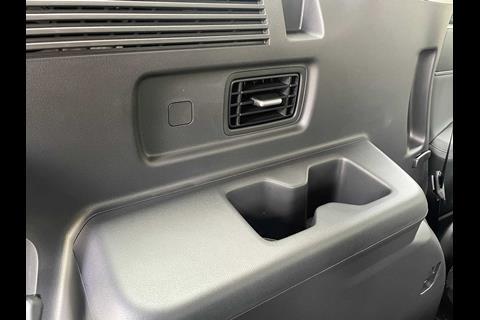

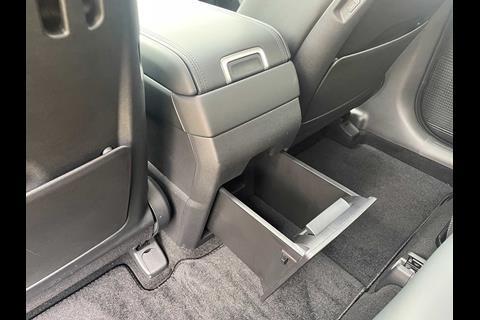







No comments yet